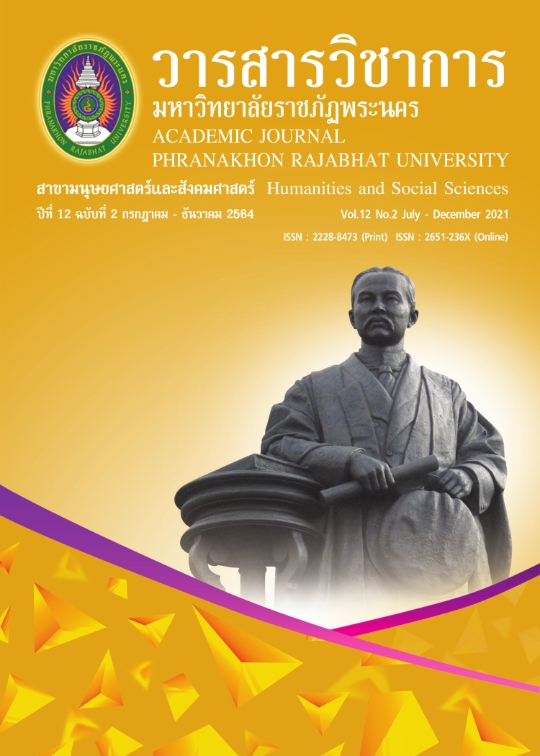TEST ACCESSIBILITY PURPOSED TO ACHIEVE ASSESSMENT AND APPLICATION FOR TEST DEVELOPMENT
Keywords:
Accessibility Theory, Test Accessibility, Cognitive Load TheoryAbstract
Test Accessibility derived from the concept of Cognitive Load Theory to assess the achievement test, applied for testing development and relieving testers' brains processing. The testing is categorized into five compositions: item stimulus, item stem, visuals, answer choices, and page/item layout. According to the essential elements, the instructors were suggested to adapt multiple-choice test for students by applying to design the test in different levels, especially for primary school that focused on concrete to abstract learning in some specific subjects such as Mathematics and Science and technology etc.
References
Beddow, P. A. (2012). Accessibility Theory for Enhancing the Validity of Test Results for Students with Special Needs. International Journal of Disability, Development and Education, 59(1), 97-111.
Beddow, P. A., Elliott, S. N., & Kettler, R. J. (2009). TAMI accessibility rating matrix (ARM). Nashville, TN: Vanderbilt University.
Beddow, P. A., Kettler, R. J., & Elliott, S. N. (2008). Test accessibility and modification inventory (TAMI). Nashville, TN: Vanderbilt University.
Beddow, P. A., Kurz, A., & Frey, J. R. (2011). Accessibility theory: Guiding the science and practice of test item design with the test-taker in mind. In S. N. Elliott, R. J. Kettler, P. A. Beddow, & A. Kurz (Eds.), Handbook of accessible achievement tests for all students: Bridging the gaps between research, practice and policy.New York: Springer, 163–182.
Chipperfield, B. (2004). Cognitive load Theory and Instructional Design, University of Saskatchewan. Retrieved from:http://www.usask.ca/education/coursework/802papers/chipperfield/index.html
Haladyna, T. M., Downing, S. M., & Rodriguez, M. C. (2002). A review of multiple choice item-writing guidelines for classroom assessment. Applied Measurement in Education, 15(3), 309–333.
Kettler, R. J., Elliott, S. N. & Beddow, P. A. (2009). Modifying Achievement Test Items: A Theory-Guided and Data-Based Approach for Better Measurement of What Students with Disabilities Know. Peabody Journal of Education, 84, 529-551.
Ongardwanich,N. (2013). Development of 21st Century skill scales as Perceived by lower secondary school students : an application of test Accessibility approach. Chulalongkorn University, (In Thai)
Saraubon, K.,& Piriyasurawong, P. (2014). Cognitive Load Reduction Media for Education in The Digital Age. Panyapiwat Journal digital age,6(1),198-211. (In Thai)
Sweller, J. (1994). Cognitive load theory learning difficulty and instructional design, Learning and Instruction 4, 295–312.
Sweller, J. (2004). Instructional Design Consequences of an Analogy between Evolution by Natural Selection and Human Cognitive Architecture. Instructional Science 32, 9–31.
Torcasio, S. & Sweller, J. (2009). The use of illustrations when learning to read: A
cognitive load theory approach. Applied Cognitive Psychology, 24(5), 659–672.
Wannatong, K. (2012). Science Achievement, Cognitive Function and Creative Innovation of StudentsLearning with Neuro Science-base. North-Eastern Thai Journal, 8(2), 57. (In Thai)
Wattanathorn, J. (2016). The Role of Brain to Meditation Motivation Learning and Memory. Integrative Complementary Alternative Medicine. Retrieved from http://www.icam.kku.ac.th (In Thai)
Downloads
Published
How to Cite
Issue
Section
License
"บทความวิชาการในวารสารฉบับนี้ ถือเป็นความรับผิดชอบของผู้เขียนเท่านั้น"
สงวนลิขสิทธิ์ตามพระราชบัญญัติลิขสิทธิ์




